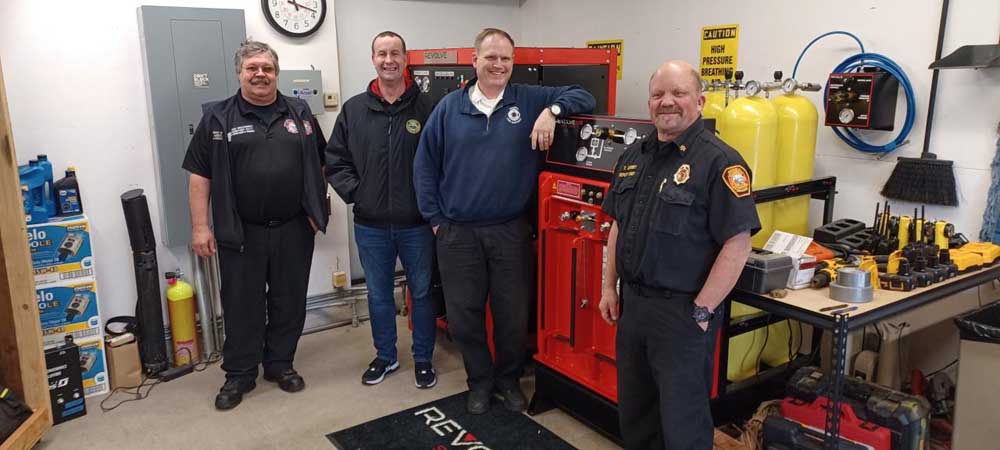Weekend Break: Hot stuff
Published 12:15 am Saturday, August 17, 2024

- Regional fire prevention leaders are shown with the new bottle-fill machine at the Fire Response and Research Center. From left, Pacific County Fire District Assistant Chief Brad Weatherby, Oregon Department of Forestry protection unit forester Neal Bond, Knappa Fire District Chief Kurt Donaldson and Astoria Fire Department Deputy Chief Terry Corbit.
Rippling flames dance across the ceiling with a roar as Tony Como flicks through the buttons and dials on his controller like the famous wizard behind the curtain.
Then with another flick of the wrist, the room fills with smoke. “Watch this,” Como says as he moves another switch, at which the natural gas fire and the smoke disappear in seconds, all part of the safety features built into the burnhouse.
Como is one of two full-time fire science instructors at Clatsop Community College’s Fire Response and Research Center, located on the Marine and Environmental Research and Training Station campus at South Tongue Point.
In its nearly quarter-century of operation, the center has become the go-to training program for firefighters from around the region. Como is responsible for the day-to-day operations of the center as well as operating the burnhouse, a three-level metal structure designed to simulate fire conditions in both marine and structure fires.
The most important thing to a firefighter is the air supply. The supply and maintenance of air equipment carried by each firefighter is a never-ending process. These lightweight, high-pressure (at 4,500 pounds), metal air bottles are all part of the training for the self-contained breathing apparatus, the lifeline for all firefighters.
Crews must be able to quickly refill the bottles and return them to service. The machine that accomplishes this feat is used extensively in the training. This puts a load on the costly machine, and they need to be serviced and replaced from time to time like any other mechanical device.
The program recently received funds for the purchase of a new high-efficiency bottle-fill station that will serve the center’s needs and serve as backup to area fire departments as well.
The funding comes from an anonymous local donor and grants from the Clatsop Community College Foundation and the Roundhouse Foundation.
The value of this training facility and its staff to the many fire agencies, industries and maritime concerns on the North Coast is great indeed.
According to Toni Middleton, the veteran program assistant, the center offers 25 classes that are certified by the National Maritime Center, which is the credentialing arm of the U.S. Coast Guard. Program assistant may be a misnomer for the duties performed by Middleton; both Kristen Wilkin, the dean of workforce education and Training at MERTS, and Kurt Donaldson, the chairman of the Regional Advisory Team, say Middleton knows more than anyone in the place. Her 30 years of service have made her the key person who keeps everything running smoothly in the face of ever-changing conditions.
Training firefighters that are bound for professional careers and volunteer crews from around the region is the main function of the program and degrees in fire science are offered in various forms. An equally important function is training firefighters in industry and government emergency agencies.
The program handles an average of 1,000 to 1,100 students per year. Most students are affiliated with an entity that requires the training as a part of a degree program or certification. Emergency medical technician training is required, and all graduates earn certification.
Donaldson, who is also chief of the Knappa Fire District, says the training facility is used by Georgia-Pacific Wauna Mill, Georgia-Pacific Camas Mill, the U.S. Army Corps of Engineers, the Coast Guard, ambulance services and nearly every firefighting agency in the region. Recently, firefighting crews from Joint Base Lewis-McChord trained at the burnhouse.
When asked about how the financing for the outside agencies is handled, he did not hesitate. “We charge ’em,” he said. “It’s a big part of how we pay for this place. We bill by the hour.”





